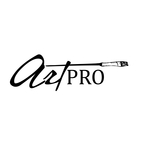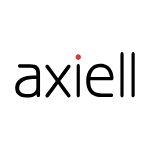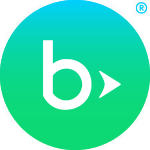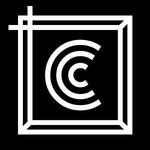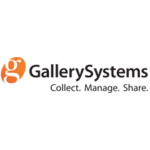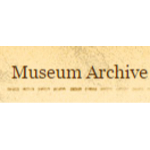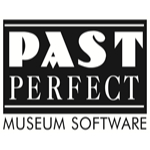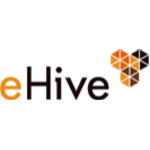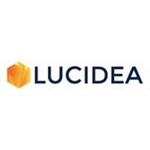List of Best Museum Software
Showing 10 of 11 productsArtPro is a dynamic and innovative software designed for artists, art collectors, and galleries. With its user-friendly interface features, ArtPro simplifies the management and sale of artworks, empowering users to showcase and sell their pieces with...Read ArtPro Reviews
Axiell is a leading software company dedicated to empowering organizations with advanced technology solutions. With a strong commitment to innovation and user-friendly platforms, Axiell provides a range of software solutions tailored to meet the evol...Read Axiell Reviews
Altru, the innovative software that revolutionizes the way organizations manage their operations. With its advanced features and user-friendly interface, Altru makes tasks such as event planning, fundraising, and donor management seamless is a . Say...Read Altru Reviews
Digital Membership Cards is a latest innovation in membership management. With a seamless, user-friendly interface technology, this software revolutionizes the way organizations handle membership cards. Say goodbye to physical cards and hello to a mo...Read Digital Membership Cards Reviews
Versai the ultimate software for businesses looking to streamline their operations and boost productivity. With its innovative features user interface, Versai revolutionizes the way companies manage their tasks and projects. Whether big or small, Ver...Read Versai Reviews
eMuseum is a platform for showcasing and preserving your collection of art and artifacts. With advanced technology and convenient features, eMuseum allows you to easily organize, share, and discover the treasures of the past. Let us guide you through...Read eMuseum Reviews
the Museum Archive, where history comes to life. Our user-friendly software allows museums to easily organize, preserve, and share their collections with the world. With a wide range of features and functionality, the Museum Archive is the perfect to...Read Museum Archive Reviews
PastPerfect is a solution for simplifying and streamlining museum and historical society collections. With its user-friendly interface and robust features, PastPerfect has revolutionized the way organizations manage artifacts, documents, and photogra...Read PastPerfect Reviews
eHive is a solution for managing collections online. With its user-friendly interface and powerful features, eHive streamlines the cataloging, storage, and sharing of collections for museums, galleries, and private collectors. Simplify your collectio...Read eHive Reviews
Argus is a solution for all your business needs. With its advanced technology and user-friendly interface, Argus is the go-to software for streamlining operations, increasing efficiency, and maximizing profits. Say goodbye to outdated systems and hel...Read Argus Reviews
- What Is Museum Software?
- Top Reasons Why Businesses Need Museum Software?
- What Are the Top Key Features of Museum Software?
- What Are the Top Benefits of Museum Software?
- What Are the Steps to Choose the Right Museum Software?
- What Are the Types of Museum Software for Different Industries?
- What Are the Technology Trends for Best Museum Software?
- What Are the Deployment Options for Museum Software?
What Is Museum Software?
Museum software refers to a specialized category of software developed exclusively for the purpose of assisting museums in effectively managing their collections, exhibits, and archives.
The best museum software provides a wide range of functionalities, including the organization and categorization of collections, the preservation of records, and the integration of collections with historical and educational materials.
The utilization of museum management software facilitates the efficient organization, updating, and management of collections for museums, offering a user-friendly interface for internet access.
Furthermore, museums can utilize this technology to effectively monitor their exhibitions, efficiently handle visitor management, and enhance visitor engagement through the implementation of interactive displays.
The museum system facilitates the creation of digital tours, audio guides, 3D reconstructions, and other related features by museums. Furthermore, the utilization of museum management system software enables museums to gather significant data, facilitating the analysis of visitor patterns and ensuring the efficacy of their strategic initiatives.
Ultimately, the best museum software offers a convenient means of establishing online connections with visitors, monitoring contributions, and facilitating virtual gatherings.
In summary, the museum system facilitates enhanced connectivity between museums and its visitors, while also streamlining the management of collections for improved efficiency.
Top Reasons Why Businesses Need Museum Software?
1. There exist numerous rationales for the necessity of museum software in organizations, and the after-enumeration delineates several primary advantages.
2. One notable improvement is the enhanced efficacy in handling various administrative responsibilities, including but not limited to admissions, financial aid, memberships, and donations.
3. The implementation of automated systems for databases and inventory management has facilitated precise monitoring and documentation of collections and purchases.
4. The museum management software enhanced contact with patrons, funders, sponsors, and other stakeholders.
5. The capacity to efficiently locate particular items within the collection and get relevant information.
6. The capacity to preserve and archive digital photos and documents on the internet enhances their accessibility and facilitates data exchange among many parties.
7. The museum has a user-friendly online presence and visually appealing web and mobile interfaces, enabling clients to conveniently access all of its material.
8. The museum is able to effectively monitor and manage collection trends through the utilization of robust data analysis and data visualization tools.
9. The utilization of interactive kiosks, digital media, and associated events to augment visitor interaction and enhance their overall experience.
10. The effective and reliable storage of personal and financial data pertaining to customers and donors.
11. The museum system implementation of streamlined e-commerce operations has resulted in enhanced convenience for users, facilitating the seamless booking of event tickets and enabling efficient shopping experiences at museum stores.
12. The implementation of customized ticket pricing and loyalty programs facilitates the provision of personalized discounts and targeted promotions.
13. One notable feature is the efficient interaction with external programs and services, like online survey platforms and marketing automation systems, which aids in saving time.
14. The provision of collaborative opportunities with external institutions, facilitating the dissemination of their exhibitions to diverse audiences.
15. The museum management software utilization of social media and online donation portals has led to a rise in chances for fundraising and donations.
What Are the Top Key Features of Museum Software?
1. Digital Asset Management: Digital asset management functionality enables museums to systematically categorize, securely store, and effectively administer digital resources, including photographs and videos of exhibits and artworks, for utilization in exhibitions, online materials, or educational initiatives.
2. Online Ticketing: The museum system enables museums to facilitate online ticket sales and effectively manage client information.
3. Event Scheduling: The museum management system allows museums to effectively plan, announce, and coordinate various events , including art history lectures, performances, and activities tailored for families.
4. Multiple Language Capabilities: This functionality enables museums to exhibit materials in multiple languages, hence enhancing the accessibility of museum content to a wider range of individuals.
5. Donor Management: The best museum software enables museums to monitor and analyze donor management, facilitating the generation of precise gift reports that aid in the assessment of fundraising endeavors.
6. Content Delivery Platform: Museum management system software enables museum personnel to generate content in the form of online articles, films, or interactive activities for visitors to engage with.
7. Exhibit Management: This functionality enables museum personnel to present, store, and oversee all exhibition materials while maintaining a record of their whereabouts within the museum.
8. Patron Tracking: Museum management system software facilitates the monitoring of visitor activities within museums and the generation of valuable insights pertaining to visitor behavior.
9. Education Programs: The museum system enables museums to develop interactive educational initiatives and engagements catered to both physical and virtual participants.
10. Analytics & Insights: The museum management software facilitates the enhanced comprehension of museum audiences by monitoring visitor engagement and gathering data for performance analysis.
What Are the Top Benefits of Museum Software?
1. Increased Visibility: The utilization of online museum software facilitates the expansion of the global audience for museum programs, hence granting access to a vast number of potential visitors.
2. Improved Documentation: The museum management software facilitates the creation of a regulated digital platform for the systematic organization and preservation of noteworthy artifacts and artistic creations.
3. Enhanced Accessibility: The museum system utilization of web software enables museums to establish connections with novel audiences, hence facilitating the provision of program offerings that were previously impracticable.
4. Streamlined Data Collection: Museum software facilitates the enhanced organization, storage, and analysis of data pertaining to a museum's assets, organizations, displays, and other relevant components.
5. Visitor Management: Museum software provides a range of tools that facilitate visitor management and education on art and culture, encompassing interactive tours and personalized information.
6. Enhanced Security: The utilization of online technologies enables the monitoring and regulation of access to culturally significant or valuable objects.
7. Improved Collaboration: The utilization of museum software facilitates the optimization of numerous tasks, including curation, cataloging, collection administration, and other related activities, by enhancing and expediting communication among different stakeholders involved in the museum operations.
8. Financial Benefits: The utilization of online museum software has the ability to enhance the process of soliciting gifts from potential donors, assist museums in securing grants, augment ticket sales, and provide additional benefits.
What Are the Steps to Choose the Right Museum Software?
1. Identify your needs: Prior to selecting a museum software, it is imperative to ascertain the precise objectives that one intends to accomplish with the use of this software. When contemplating the selection of a museum, it is essential to take into account many factors such as the categorization of the museum, the dimensions of the items, and the target audience for whom the enhancement of their experience is sought. It is imperative to also take into account one's financial constraints.
2. Identify features you need: Once the user has established their desired objectives for the software, they may commence the process of investigating the many capabilities that are potentially accessible. Several aspects that could be considered include data management, multimedia functionalities, curatorial tools, ticketing specifications, and online/offline support.
3. Do your research: After establishing a clear understanding of the necessary functionality, the next step involves conducting research on the best museum software options that may encompass these aspects. It is advisable to engage in the practice of perusing reviews, consulting with acquaintances and professional contacts, or conducting web searches to obtain software recommendations.
4. Talk to the software provider: Once the list of viable software solutions has been reduced down, it is advisable to initiate contact with various providers in order to obtain additional information. In order to ascertain the compatibility of the software with your specific requirements, what inquiries should be made?
5. Get a trial: Museum management system software is advisable to approach the software provider and request a complimentary trial of the software without hesitation. This will afford you the opportunity to evaluate the program prior to making a commitment.
6. Make the decision: After conducting extensive research, conducting trials, and engaging in discussions with several software suppliers, you are now equipped to make an informed conclusion regarding the best museum software for your needs
What Are the Types of Museum Software for Different Industries?
There are a variety of different types of museum software used for different industries.
1. Collections Management Software: The purpose of this system is to facilitate the management and organization of data pertaining to museum collections, including objects, artifacts, curated exhibits, and conservation endeavors.
2. Membership software: The museum is responsible for tracking membership information, overseeing the renewal processes, and facilitating communication with its members.
3. Point-of-Sale (POS) software: Loyalty programs, inventory tracking, and integrated payment processing are utilized for admissions and gift shop sales purposes.
4. Event Ticketing software: This software platform is utilized for facilitating online ticket sales, generating physical tickets and passes, monitoring events, allocating seating arrangements, and generating tailored reports.
5. Guided Tour software: This technology is employed for the purpose of organizing, coordinating, and executing interactive guided tours.
6. Fundraising software: Fundraising software application serves the purpose of monitoring and recording charitable contributions, overseeing promotional initiatives, and facilitating the distribution of expressions of gratitude.
7. Education and Learning software: Educational programs are often augmented to optimize the learning experience, monitor progress, enable virtual instruction, and track user advancement.
8. Digital Library software: The primary responsibilities encompassed in this role involve the administration and oversight of library management and digital assets, as well as providing assistance to library patrons and regulating access privileges.
9. Content Management Software: Assists in the management and distribution of content across multiple digital platforms.
10. Customer Relationship Management (CRM) software: The utilization of CRM tools facilitates the management of connections with museum visitors, hence enhancing the effectiveness of targeted messaging strategies.
What Are the Technology Trends for Best Museum Software?
The prevailing technological advancements in the realm of museum software are mostly centered around the domains of digitization and cloud computing. The process of digitizing museum assets, such as collections, exhibitions, instructional materials, and visitor data, has the potential to enable various advantageous functionalities, including enhanced storage, preservation, tracking, and analytics.
The process of digitization has several benefits, including cost savings and the removal of physical space limitations for museum collections. Consequently, it enables broader accessibility to virtual collections.
Cloud computing serves as the foundational technology for a majority of digital museum solutions and is experiencing a growing trend in its adoption for software and application management.
By utilizing cloud resources and capitalizing on distributed computing, museums have the potential to decrease their technical expenses while ensuring secure and dependable access to technological assets.
The incorporation of artificial intelligence (AI) and machine learning (ML) into museum software is anticipated to have an increasingly significant impact on enhancing the level of personalization and customization in the experiences offered to museum visitors.
Artificial intelligence (AI) and machine learning (ML) have the potential to optimize digital asset management, identify abnormalities in visitor data, and offer predictive analytics.
These capabilities can assist museums in streamlining their operations and improving visitor experiences.
What Are the Deployment Options for Museum Software?
The available choices for deploying museum software encompass an on-premises installation, a cloud-based installation, a hybrid installation, a virtual machine deployment, and a web browser-based installation.
- On-premises installations give museum personnel the ability to exercise authority over their information technology infrastructure, albeit necessitating substantial initial expenditures and continual upkeep.
- Cloud-based installations provide museums with the capability to get the latest software versions without the need for supplementary hardware or installs.
- Hybrid installations provide the capability to integrate cloud-based services with on-premises software, hence offering enhanced flexibility and scalability compared to a solely on-premises system.
- Virtual machine installations share similarities with cloud-based solutions as they enable museum personnel to conveniently access apps from any internet-connected device.
- Web browser-based installations enable users to conveniently access and manage their software without the requirement of downloading or installing a substantial client application.
